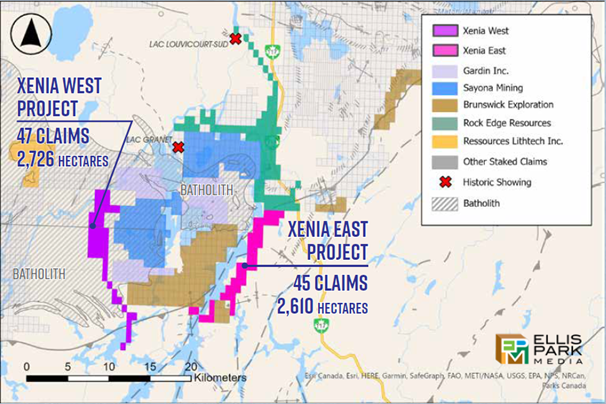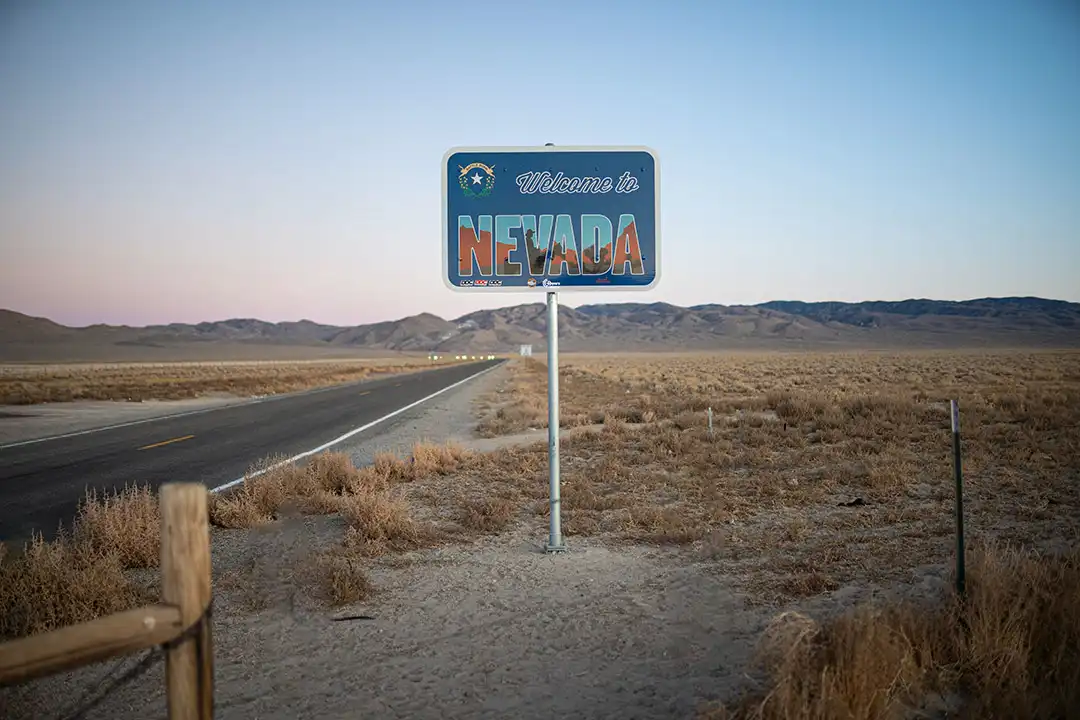Quebec Portfolio
The Gaspe Region’s Lithium properties are road accessible. A couple of large areas with historic grab samples ranging from 255 ppm to 30 ppm Lithium. The areas with the historic results is an approximate target size of 300m by 400m. The grab samples were mentioned to be serpentinite which is a green rock, a greenstone, the historic samples had concentrations of Rare Earth Elements Rb, Ta, U similar to recent Lithium-cesium-tantalum (LCT) pegmatites type Lithium occurrences discovered by Patriot Battery Metals.
Global Supply
Global Demand (2035)
Countries phasing out fossil fuel cars in the next 10-30 years
Lithium Projects Under Management
Project SUmmary

The Gaspe Region’s Lithium properties are road accessible. A couple of large areas with historic grab samples ranging from 255 ppm to 30 ppm Lithium. The areas with the historic results is an approximate target size of 300m by 400m. The grab samples were mentioned to be serpentinite which is a green rock, a greenstone, the historic samples had concentrations of Rare Earth Elements Rb, Ta, U similar to recent Lithium-cesium-tantalum (LCT) pegmatites type Lithium occurrences discovered by Patriot Battery Metals.
Lac Simard Nord & South
100% of the Lac Simard Nord & South Project consisting of claims blocks, directly contiguous to Sayona Mining Limited’s (ASX: SYA) “Tansim” Project, comprised of the Viau-dallaire and Viau Showings estimated by Sayona has having the potential to contain between 5 to 25 million tons of Li20 @ 1.2-1.3%.
This brings the Company’s holding in Canada’s only producing lithium camp to 3,958.75 acres at Lac Simard, Quebec.

XENIA WEST & EAST

The Property consists of 92 mining claims covering approximately 5,382 hectares or 54 square km. The Property is located 30km southeast of Val-d’Or, accessible via the regional 117 highway.
The Property is contiguous to Sayona Mining Limited’s and Brunswick Exploration properties. The Property lies chiefly on the metagraywackes of the Pontiac Geological Subprovince. The Réservoir Decelles Batholith is located 1-3km away from the Property and consists of a heterogeneous granite which contain muscovite-pegmatites. The vicinity of the Property was prospected for Cu-Ni (Lac Granet, Lac Louvicourt-South and Céré-Villebon) and the search for pegmatites were ignored until very recently.
Project highlights
A recent mineral exploration on the Galt claim group under option to Surge Battery Metals (CSE:NILI) located 11 Miles to the South includes 51 playa sediment samples collected for chemical analysis at ALS Geochemistry in Vancouver, B.C.
Results of aqua regia leaching of the samples show 68 to 852 parts per million lithium (mean 365 ppm), 5.3 to 201 ppm cesium (mean 72 ppm) and 35 to 377 ppm rubidium (mean 180 ppm). Results from two seven-foot-deep auger holes show lithium, cesium, and rubidium concentrations in the range of 143.5 to 773 ppm Li, 56.8 to 102.5 ppm Cs and 155 to 272 Rb.
Recent Mineral Exploration completed by Nevada Energy Metals Inc. in 2016 (NICL-V) tested for lithium (Li) values in playa evaporates returned significant geochemical results at the Company’s 100% owned Black Rock Desert Project in Nevada. Geochemical sample points were arranged on a grid pattern of 11 lines spaced 400 meters apart with stations every 200 meters along the lines. One hundred and seventy (170) soil samples were collected. Results ranged from 82.8 to 520 parts per million (ppm) lithium with a median value of 182 ppm. Twelve samples carried over 300 ppm Li.
These results show that dissolved lithium has been transported into this portion of the Black Rock Desert and is available for potential concentration by evaporative brines. The exploration model for the Black Rock Project is a Clayton Valley evaporative brine deposit as described in USGS Open File Report 2013-1006.
The entire San Emidio Desert basin is a highly prospective lithium exploration zone and is about 38 km long and up to 11 km wide at the widest point with the central playa measures about 8.5 km north – south and 4.5 km east – west.
A proposed four-hole drill program at the Galt project is pending permitting approval is designed to test a tight grouping of highly anomalous surface sediment sampling locations which returned assay values with a high of 312 ppm lithium and a mean value of 215 ppm lithium.





